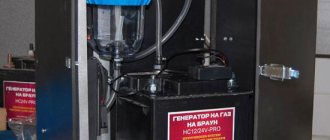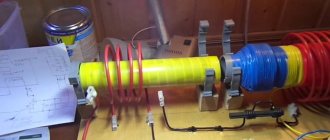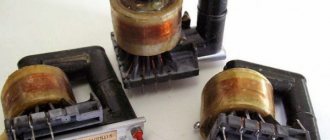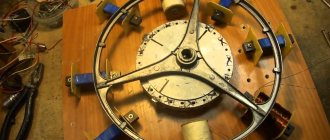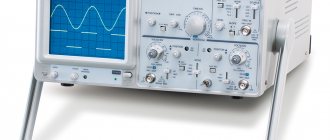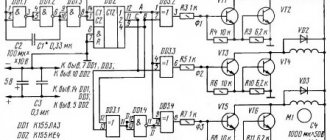Electricity helps humanity solve a huge range of domestic and industrial problems, but its production requires a constant expenditure of resources from humans. The most effective today are fuel generators that are used at thermal power plants and in mobile models of gasoline and diesel generators. But the development of progress does not stand still - humanity is constantly trying to reduce the cost of electricity through the introduction of innovations. One of the most revolutionary ideas is to create a fuel-free generator that can be rotated without wasting resources.
What is a FTG (fuel-free generator)?
The idea itself is relatively not new; the concept of a fuel-free generator refers to a device that will generate electricity without the need to expend resources on rotating its shaft. This idea was based on such outstanding scientists as Tesla, Einstein, Hendershot and others. In those days, to start and operate the generator, steam was used, obtained from the combustion of some kind of fuel, and this is where the name fuel-free came from.
Nowadays, it is no longer necessary to use fuel to generate electrical energy. They learned to generate it from solar energy, wind energy, rivers, ebbs and flows. But the devices proposed by the physicists who were the founders of electrical engineering still border on science fiction and continue to excite the imagination of both eminent scientists and ordinary people.
Principle of operation
Any generating device is built on the principle of generating electric current through the directed movement of charged particles in a conductive medium. This effect can be achieved by:
- Generation of alternating magnetic flux - when an EMF is induced in a conductor from an external magnetic field;
- The flow of charged particles between media with different potentials;
- Self-generation is an operating mode in which the device increases the power of the initial pulse, which allows it to maintain its operation and accumulate part of the energy to power some third-party consumer.
The only reason why such a plan cannot be fully realized is the law of conservation of energy. To get one type of energy, you still need to expend another type. Therefore, the idea of inventing a fuel-free generator gave rise to a lot of myths around this issue and gave rise to adventurers.
Myth or reality?
Let me note right away that great minds did not create the idea of a fuel-free generator for commercial gain. People like Nikola Tesla and Albert Einstein were driven by a completely natural thirst for knowledge and the desire to make this world a better place, and not by banal enrichment. As the chronicles of their activities testify, they managed to achieve incredible success. Many of their achievements left behind many more questions than answers, which gives our contemporaries a reason to continue their daring and scientific pursuits.
The reason why great scientists could not realize their inventions was the imperfection of technology or the absence of any component that would provide a stable result. Our contemporaries, in scientific laboratories and at home, are trying to realize unrealized ideas for creating a fuel-free engine, sometimes for scientific purposes, sometimes for profit. But it has not yet been possible to achieve the desired goal and establish the production of a fuel-free generator on an industrial scale.
Due to the rapid activity of scammers on the Internet, you will come across a lot of offers to buy a fuel-free generator, but these models do not work. As a rule, unscrupulous inventors take advantage of the population's illiteracy in matters of electrical engineering, create beautiful packaging and sell a dummy under the tempting name of a fuel-free generator. But this does not mean that working schemes do not exist; consider examples of the most famous of them.
Impact on humans
Unlike low-frequency current, high-frequency current does not penetrate deep into human tissue, flowing down the surface of the body. HF current eliminates electrical injury.
UHF device
Used in medicine to treat:
- ultra frequency therapy, UHF devices;
- diathermy, heating with HF currents;
- inductothermy, high-frequency magnetic field treatment;
- healing of organs using a microwave device;
- darsonval, exposure of body parts to high-voltage discharges.
In everyday life, they use a microwave oven with microwave radiation.
N. Tesla is rightfully considered a genius of his time. There is an opinion that his theory of the ether and his brilliant developments were blocked. Tesla dreamed of providing humanity with free energy, creating an anti-gravity engine by converting the energy of the ether. Even schoolchildren assemble the fuel-free generator and N. Tesla resonant transformer with their own hands. And this means that someone will continue his work.
Overview of BTGs and their schemes
Today there are quite a large number of fuel-free generators of various designs and operating principles. Of course, not all models and the principle of their operation were covered by the creators for the general public. Most fuel-free generators remain a secret, sacredly protected by their creators and patents. We can only analyze the available information about the principle of their action and general information about their effectiveness.
Adams generator - "Vega"
A fairly effective magnetic-type generator invented on the basis of the theory put forward by scientists Adams and Bedini. The operation of the generator is based on a rotating magnetic rotor, which is made up of permanent magnets with the same pole orientation. When the rotor rotates, a synchronous magnetic field is created, which induces an EMF in the stator windings. To maintain rotor torque, short-term electromagnetic pulses are applied to it.
The industrial implementation of this principle was given to the Vega generator, which comes from the abbreviation Vertical Adams Generator, which is intended for power supply to private houses, cottages, and shipping facilities. Due to short-term pulses at the output, a pulsating voltage is created, supplied to the batteries for charging, and from them inverted into an alternating voltage of industrial frequency. But the question of whether the declared parameters correspond to its real capabilities is quite controversial.
Tesla Generator
It was patented by a famous Serbian physicist more than a hundred years ago. The principle of operation is the presence of electromagnetic radiation in the Earth's atmosphere, while the planet itself represents a much lower level of potential.
Rice. 1. Schematic diagram of the Tesla generator
Look at the picture, the Tesla fuel-free generator conditionally consists of the following parts:
- Radiation receiver - made of conductive material located on a dielectric base. The receiver must be isolated from the ground and placed as high as possible;
- capacitor (C) – designed to accumulate electrical charge;
- ground electrode – designed for electrical contact with the ground.
The principle of operation is that the receiver receives electromagnetic energy, which begins to flow through a closed circuit to the ground. But, due to the presence of a capacitor, the charge does not flow down the ground electrode, but accumulates on the plates. When connecting a load to a capacitor, the device will be powered by discharging the capacitor. In addition, the design can be supplemented with automation and converters for continuous power supply along with recharging.
Generator Rossi
The operation of this fuel-free generator is based on the principle of cold nuclear fusion. Despite the absence of classical turbines driven by steam or combustion of petroleum products, for its operation, instead of burning fuel, a chemical reaction between nickel and hydrogen is used. In the chamber of the Rossi generator, an exothermic reaction occurs with the release of thermal energy.
It should be noted that for the reaction to proceed normally, a catalyst is used and electricity is consumed. According to Rossi, the amount of thermal energy generated is 7 times greater than the electricity consumed. This model is already beginning to be implemented for heating areas and generating electricity. But, since for operation it is still necessary to refuel the installation with working reagents, it cannot be called completely fuel-free.
Hendershot Generator
The principle of operation of this fuel-free generator was proposed by Lester Hendershot and is based on the conversion of the Earth's magnetic field into electrical energy. The scientist proposed a theoretical justification for the model back in 1901 - 1930, it consists of:
- electric coils in resonance;
- metal core;
- two transformers;
- capacitors;
- permanent magnet.
For the circuit to work, the orientation of the coils must be observed from north to south, due to which the magnetic field will rotate, which will generate an EMF in the coils.
Mark Hendershot, son of Lester Hendershot presents his BTG
There is also a diagram of this BTG circulating online (picture below). How true it is, I cannot say.
Hendershot generator circuit
Generator by Tariel Kapanadze
Our contemporary claims that he discovered the possibility of obtaining electrical energy from the ether, working with Tesla coils and continuing the research of the famous scientist. Kapanadze's fuel-free generator consists of a Tesla coil, a block of capacitors, a battery and an inverter, but this arrangement is just a guess; the inventor himself keeps the design of the fuel-free generator in the strictest confidence.
Rice. 2: general view of the Kapanadze generator
Look at Figure 2, it shows a general view of the free energy generator. Today there are rumors about an attempt to sell the device on a large scale for the needs of consumers in some countries, but they have not been able to achieve the final result.
The electrical circuit of this generator also circulates on the network (figure below). But we cannot say how true it is.
Electrical circuit of the Kapanadze generator
Khmelevsky generator
According to the official version, Khmelevsky’s fuel-free generator was discovered by accident, since the creator conceived it as a power supply for converting direct current into alternating current. But it found wide application in geological exploration and became widespread in expeditions moving away from sources of central power supply.
Such a fuel-free generator consists of a transformer with split windings, resistors, capacitors and a thyristor. Electricity is generated due to the special design of the transformer itself, which can create a counter EMF greater than that at the input. This result is achieved due to the resonance effect and the application of a voltage of a certain frequency and amplitude.
John Searle Generator
The fuel-free Searle generator is based on the principle of magnetic interaction between the core and the rollers. In which magnetic rollers are placed at an equidistant distance and tend to maintain their position after the system is set in motion. The magnetic motor includes a multi-component fixed core, around which the same multi-component rollers rotate. There are coils installed along the diameter around the rollers, in which an EMF is generated when a magnetic roller passes near them. To start the device, starting electromagnets are used, which supply pulses that drive the rollers.
Rice. 3: general view of the Searle generator
According to Searle, the rollers independently increase the rotation speed due to the alternating magnetic field created by the different polarity combination of magnets inside the rollers and inside the stationary core. When manufacturing a structure in three levels, the rotation speed leads not only to the generation of electricity, but also reduces the weight of the device, up to an anti-gravity effect.
Romanov generator
The operating principle of the Romanov fuel-free generator is to apply standing waves to one of the capacitor plates, while the second plate is directly connected to the ground.
Rice. 4: operating principle of the Romanov generator
Look at the figure, here is the principle of operation of the device; when one plate is connected to the ground, a certain charge arises on it. Standing waves on the second plate generate a potential that is significantly different from the ground potential. Coils with multidirectional winding act as a standing wave generator, in which eddy currents compensate for the active component of the current. After accumulating charge, the capacitor can be used to power electrical appliances as a load.
But it was not possible to achieve unambiguous success for domestic or industrial purposes in the implementation of this model.
Schauberger generator
Such a fuel-free generator is based on obtaining torque on a turbine by moving water through a pipe system and further converting mechanical energy into electrical energy. To achieve this effect, the design of the generator uses a through flow of water obtained from moving water from bottom to top.
Rice. 5: Schauberger generator circuit diagram
The principle of operation of this mechanical generator is based on the creation of cavitation cavities in the liquid - a state of rarefaction close to vacuum, due to which the water moves not from top to bottom, as we are accustomed to observing in nature, but from bottom to top, which sets the rotor of the electric generator in motion and creates a vicious cycle. When water rises up through the inner tubes and falls back into the original reservoir.
Design Features
A simple fuel-free electric generator consists of a rotor and a stator.
The stator of the machine does not move and is usually the outer frame of the machine. The rotor can move freely and is usually located inside the machine. They are both typically composed of ferromagnetic materials. The slots are made along the inner periphery of the stator and the outer periphery of the rotor. The conductors are placed in the corresponding slots of the stator or rotor. They are connected to each other, forming round windings. The winding in which the voltage is induced is called the armature winding, and this is also the name given to the current transmitted through it. Permanent magnets are used in some machines to provide the main flux to the machine.
Steven Mark's TPU device is radically different from other fuel-free devices with its original design. Such a generator does not have radio frequency resonators. The working part of the device consists of a metal ring (diameter approximately 20 cm), onto which coils made of thick stranded wire are placed. The author demonstrated his invention in public more than once, but then the original development was strictly classified.
And yet, thanks to his followers, a new version was released - Ottp Ronette, which already had differences from the original version. She already had two plastic rings, to which a thick pair of wires was attached. The wires themselves were connected crosswise.
Is it possible to make a fuel-free generator with your own hands?
Many of the generators discussed above cannot be implemented at home. In some cases, their authors do not provide electrical circuits for public use; in others, autonomous operation ends some time after the start of generation. But there are models that you can try to implement at home yourself. But we don't give any guarantee. This is just an attempt and one of the possible implementations.
Let's look at the example of manufacturing a fuel-free Tesla generator. For this:
- you will need to make a receiver, for this you can use aluminum foil (in this example, a piece measuring 900x300 mm is taken) and attach it to an insulating surface, for example, dry plywood or a polymer plate.
Rice. 6: Make a radiation receiver - attach a conductor to the center of the receiver to collect current and transfer electric charge to the electrical energy storage device.
Rice. 7: secure the wire - install the receiver at the highest point (in this example it is located on the roof of a private house).
- make sure that neither the receiver foil nor the wire from it to the drive touch grounded elements.
- connect the wire to one of the capacitor plates (for this circuit, a 2200 µF model is used).
- Ground the terminal of the second capacitor plate.
Rice. 8: capacitor connection - after connecting, check the circuit at the electrical connections and measure the charge of the capacitor (it is equal to zero or strives to this value).
- After 30 - 60 minutes, use the same multimeter to measure the voltage on the capacitor (in this example, the voltage was 202 mV).
Rice.
9: Measure the charge on the capacitor As you can see, the Tesla fuel-free generator actually works, and you can assemble it at home yourself. The main drawback is that it can only power an LED, and only for a few seconds at most. The power of such a device depends on the area of the receiver and the capacitance of the capacitor. And while it is still possible to select high-capacity capacitors, creating a receiver the size of a football field so that you can uninterruptedly power at least a house is quite problematic.
Most popular models
Currently, the most popular generators are models from, U-Polemag, Vega, and Verano-Co.
They occupy a large part of the device market. Vega produces devices that operate on the principle of magnetic induction. This idea was realized by the famous physicist Adams. The price often depends on the power and size of the device. The minimum cost is 45 thousand rubles.
This manufacturer has a number of advantages:
- Products from are very environmentally friendly.
- The generators are completely silent, which allows them to be installed anywhere.
- The devices are relatively compact.
- The manufacturer has quite a few models, the power of which starts from 1.5 kW and reaches up to 10 kW.
The minimum service life is 20 years. Batteries must be replaced every 3-4 years.
"Verano-Co" is a Ukrainian manufacturer that uses only high-quality components for its products. It produces generators for both domestic and industrial purposes. The operating principle of the alternative energy source is the same as that of other magnetic units. The cheapest model costs 50 thousand rubles. Prices for devices reach 200 thousand rubles.
U-Polemag is a Chinese manufacturer. Represents the largest variety of generator models. The standard efficiency of the devices is 93%. Maximum energy loss is 1%. Often purchased for household use. It has compact dimensions, low noise level and light weight. The package includes cooling systems. The maximum duration of use reaches 15 years. Prices for the model range start from 30 thousand rubles. and reach 90 thousand rubles.
Energizistem produces vertical devices. Consumers do not have a clear opinion about the quality and power of devices. Prices for generators are a little high and start at 50 thousand rubles.
Moskvin engine
The Moskvin fuel-free engine is a mechanical device that converts the energy of an external conservative force into kinetic energy that rotates the working shaft, without consuming electricity or any type of fuel. Such devices are actually perpetual motion machines, operating indefinitely as long as force is applied to the levers and the parts do not wear out in the process of converting free energy. During the operation of a fuel-free engine, free free energy is generated, the consumption of which when connecting a generator is legal.
New fuel-free engines are universal and environmentally friendly drives for various mechanisms and devices that operate without harmful emissions into the environment and atmosphere.
The invention of a fuel-free engine in China prompted skeptical scientists to conduct a substantive examination. Despite the fact that many similar patented inventions are in doubt due to the fact that their functionality has not been tested for certain reasons, the fuel-free engine model is fully functional. A sample device made it possible to obtain free energy.
Manufacturers of permanent magnets
The Valtar enterprise specializes in large-scale production of rare-earth magnetoplasts from a neodymium-iron-boron (Nd-Fe-B) alloy. (095) 777-3926 Address - come from 11 to 19 Korolev, Moscow region. Email – write from 0 to 24
Erga LLC Kaluga. Rare earth permanent magnets, magnetoplasts. tel./fax ; tel./fax E-Mail:
JSC "ELMAT-PM" Kaluga Production of high-energy permanent magnets based on Nd-Fe-B and Sm-co alloys; 248033, Kaluga, 2nd Akademicheskiy proezd, 17 tel./fax, 72-87-91, 72-88-24, 72-82-00 e-mail: ,
PO Box 74 Production of rare earth magnets Address: 620066, Ekaterinburg, Main Post Office, PO Box 74. Telephone: (3432)-41-32-79. Fax: (3432)-41-33-70. e-mail:
“Master Magnet” Our address: 121351 Moscow, Molodogvardeiskaya str. 61 telephone: (095) 730-8074 fax: (095) 730-8074 E-mail:
OJSC "Tula Permanent Magnets Plant" 300002, Tula, Arsenalnaya St., 2 mailto: tel./fax, 34-57-07, (095) 317-67-18, 755-82-18, 755- 82-19, 755-82-20
000 "NPK Magnets and magnetic systems" Rare-earth hard magnetic alloys Nd-Fe-B (neodymium-iron-boron) and Sm-Co (samarium-cobalt), permanent magnets based on them Tel.: (495) 230-6856 Tel./ fax: (495) 234-3383 Address: legal 127238, Moscow, Dmitrovskoe highway, no. 58 postal 117393, Moscow, Obrucheva st., no. 52 E-mail:
JSC Ferropribor Manufactures ferrite magnets. A ring magnet for a speaker 85 x 35 x 16 costs about 60 rubles. Rectangular magnets cost approximately 400 rubles/kg. 198320, St. Petersburg, Krasnoye Selo, st. Svobody, 50 tel.
Disadvantages of engines
Despite the advantages, fuel-free generators also have their disadvantages:
- When staying near a running engine for a long time, a person may notice a deterioration in their health.
- For the operation of many models, including the Chinese engine, special conditions are required.
- In some cases it is quite difficult to connect a ready-made engine.
- High cost of fuel-free Chinese engines.
Recommendations for selection
Any such devices (especially magnetic generators) cost quite a lot. Often, consumers want to buy a high-quality model, but at the same time spend a minimal amount of money. Recently, people have started purchasing goods from China. This is due to the fact that the products are cheap and have quite tolerable quality. Generators or structural elements can be purchased abroad, but there are certain risks that should be taken into account:
- You have to pay for the product before receiving it.
- It often happens that products do not correspond to the description on the website.
- Sometimes the package does not reach the recipient, and no one will return the money.
Often such savings turn out to be false. It is possible to purchase a generator directly from the manufacturer. But with this option, you need to know all the intricacies of the device’s design so that an experienced seller cannot “sell in” a generator that does not meet the requirements, so before purchasing you should:
- Thoroughly study the market for such devices. This will allow you to discover leaders among manufacturers.
- Correctly calculate the power. This way you can save money without overpaying for unnecessary features.
It is advisable to make sure that a warranty card is issued for the product. Each model must have a test sheet which can confirm the quality.
Permanent magnets are characterized by three main parameters: residual magnetic induction B r, coercive force H c and energy product BH.
B r determines the magnitude of the magnetic flux. If magnets with higher magnetic induction are placed in the generator, then the voltage on the windings will proportionally (roughly speaking) increase, and hence the power of the generator.
H c determines the magnetic voltage. If magnets with a higher coercive force are placed in the generator, the magnetic field will be able to overcome large air gaps. And it will be able to “maintain current” in a larger number of stator blades. When converting an industrial generator to permanent magnets, there is usually nowhere to wind additional turns, so the increased coercive force is useful when making homemade generators with a stator that does not have iron. To “break through” significant air gaps you cannot do without a large Hc. Rare earth magnets are leaders in this indicator.
BH is calculated per 1 m 3 of magnets. This product is less than just the product of B r by H c. By the value of BH one can judge how small the dimensions of the magnetic system will be.
Now about what types of magnets there are. For the manufacture of homemade generators, it is advisable to use only two types of magnets: ferrite, which are used in speakers, and the currently most powerful REM (rare earth metal) magnets made of neodymium. Their approximate characteristics are as follows (note that the spread of parameters is very large, some average figures are given):
- Ferrite-barium magnets: 4500 kg/m 3 ; B r = 0.2 - 0.4 T; N c = 130 - 200 kA/m; BH = 10 - 30 kJ/m3; price 100 - 400 rub/kg; maximum temperature 250 degrees.
- Ferrite-strontium magnets: 4900 kg/m 3 ; B r = 0.35 - 0.4 T; N c = 230 - 250 kA/m; BH = 20 - 30 kJ/m 3 ; price 100 - 400 rub/kg; maximum temperature 250 degrees.
- REM magnets Nd-Fe-B: 7500 kg/m 3 ; B r = 0.8 - 1.4 T; N c = 600 - 1200 kA/m; BH = 200 - 400 kJ/m3; price 2000 - 3000 rub/kg; maximum temperature 80 - 200 degrees.
If you calculate the cost of one cubic meter of magnet and then divide it by BH, by the number of joules stored there, it turns out that barium magnets are two times cheaper than neodymium magnets in terms of the cost of energy available in the magnets. But this gain is “eaten up” by the large dimensions of the generator and the heavier winding and iron. Therefore, using expensive neodymium magnets in a homemade generator is quite profitable. And as they become cheaper, neodymium magnets become out of competition.
Tesla resonator transformer
The Tesla resonant transformer is an oscillator (oscillatory system) in which it transforms and changes the voltage of an alternating electric current into a high-frequency one.
The Tesla transformer is based on two circuits, a primary and a secondary coil. It is in this oscillatory system that the transformation of the initial electric current pulse occurs.
Components of a Tesla coil:
- coils (primary, secondary);
- storage capacitor;
- spark gap fan (protects against overvoltage);
- protective circuit or ring with grounding;
- toroid.
The assembly of all these elements into a single device will allow a low-frequency pulse of electric current to be converted into a high-frequency voltage.
High frequency transformer circuit
Purpose of elements of the Tesla high-frequency transformer
Toroid. A circle rotating in a straight line forms a torus shape. This is the geometric shape of a toroid. For the Tesla transformer, a corrugated metal pipe is used.
Purpose of the toroid:
- reduces the oscillation frequency of the secondary circuit;
- increases output voltage;
- creates an electrostatic field in the secondary winding;
- protects the secondary winding from breakdown.
Primary winding or resonant circuit
Conductor with low resistance. For its manufacture, a copper tube with a diameter of 6 mm is used. Using additional devices, the resonance frequency of the circuit is changed.
Secondary coil
The main element of a resonant transformer is a secondary coil with winding. The length of the winding in experimental installations to the diameter is 5/1. The optimal number of turns of copper winding is 1000 - 1200 revolutions. They are wound on dielectric PVC pipes.
Materials for the manufacture of high-frequency Tesla transformer:
- a transformer for neon lighting is used as a power source (up to 35 mA/output voltage less than 4 kV);
- capacitor;
- copper wire thickness (from 0.3 to 0.6 mm);
- plastic pipe (75 mm);
- grounding (metal rod);
- metal ventilation pipe:
- a metal ball, hollow inside (toroid);
- copper tube for air conditioner (6 mm).
- metal ball, fastener.
Installation of the generator system according to the diagram.
The system consists of the following blocks:
- Arrester. 2 metal bolts are screwed to a plastic base, and a metal ball is fixed between them. At the moment of connection to the transformer, a spark appears in the arrester.
- Capacitor. Consists of 1 block or component elements. The capacitor accumulates charge to pierce the spark gap.
- A resonant transformer supplies the primary electrical impulse.
- Secondary coil of the inductive loop. The copper wire is wound onto a plastic pipe, the turns should fit tightly to each other (the number of turns is from 900 to 1200). The winding, if it is not enameled copper wire, is covered with several layers of varnish and epoxy resin. A wire is connected to the secondary coil and ground is connected.
- Primary circuit. They are made from a copper pipe that is bent into several turns. To prevent it from cracking at the moment of bending, sand must first be poured inside. Between turns leave distances of up to 5 mm. Connect all elements according to the diagram.
Note! A toroid is needed to prevent the steamer from hitting the primary winding. The spark damages the electronics. The toroid is grounded by connecting to the main wire.
Tesla Coil Effects
Operating principle of the Tesla transformer
A pulse is supplied from the transformer, which charges the capacitors. When the required voltage is reached, a gas breakdown occurs at the spark gap and a spark occurs. The primary circuit at the moment of closure generates a high-frequency oscillation. Electromagnetic waves pass to the secondary coil. A resonant oscillation occurs, which produces currents of high frequency and voltage.
Gas discharges
The operation of Tesla's high-frequency transformer is accompanied by interesting effects. Various gas discharges and glows are formed:
- Steamers. Ionized glow of gases in the air.
- Sparky. Flashing and dying spark channels.
- Corona glow. Occurs around bent parts of the transformer (blue).
- Arc. Appears when a grounded object is introduced into a high-voltage field, a luminous arc appears.
Similar effects are widely used to create various pop and circus shows.
Ionized glow of a Tesla transformer
Asynchronous magnetic motor
The creator of the asynchronous magnetic motor was Tesla. Its operation is based on a rotating magnetic field, which allows the resulting energy flow to be converted into electric current. An insulated metal plate is attached at the maximum height. A similar plate is buried into the soil layer to a considerable depth. A wire is passed through the capacitor, which on one side passes through the plate, and on the other, it is attached to its base and connected to the capacitor on the other side. In this design, the capacitor acts as a reservoir in which negative energy charges accumulate.

